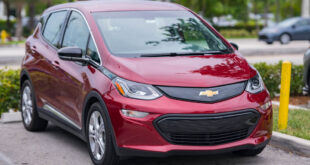Cost of EV Ownership: Understand the True Costs Electric vehicles (EVs) are becoming increasingly popular due to their environmental benefits, technological advancements, and government incentives. However, understanding the cost of EV ownership is crucial before making the switch. This article explores the various factors contributing to EV costs, from purchase price to long-term maintenance, to help you make an informed decision.
Understanding the Cost of EV Ownership
1. Initial Purchase Price
The upfront cost of an EV is often higher than traditional gasoline-powered vehicles. Factors influencing the price include:
- Battery size and capacity
- Advanced features like autopilot or enhanced safety systems
- Brand reputation and market demand
2. Government Incentives and Tax Benefits
Many governments offer incentives to promote EV adoption. Examples include:
- Tax credits ranging from $2,500 to $7,500 in the US
- Subsidies for charging infrastructure
- Reduced registration fees in some regions
3. Charging Costs vs. Fuel Costs
Charging an EV at home or public stations is significantly cheaper than refueling a gasoline car. Key points to consider:
- Average cost of home charging: $0.10 to $0.15 per kWh
- Cost at public fast chargers may vary but is still lower than gasoline per mile
4. Maintenance and Repair Costs
EVs generally have fewer moving parts, resulting in lower maintenance costs. Key savings include:
- No oil changes
- Minimal wear on brakes due to regenerative braking
- Longer-lasting components
However, replacing an EV battery can be expensive, costing between $5,000 and $20,000, depending on the model.
5. Insurance Costs
Insurance premiums for EVs tend to be higher due to their higher purchase prices and specialized repair needs. However, some insurers offer discounts for eco-friendly vehicles.
6. Depreciation Rates
EVs may depreciate faster than traditional cars due to:
- Rapid advancements in battery technology
- Limited used EV market demand
To offset this, opt for models with longer warranties or proven resale value.
7. Charging Infrastructure Costs
Installing a home charging station can cost between $500 and $2,000, depending on the level of charging. Public charging availability also varies by region, which may influence convenience and costs.
8. Electricity Rates and Peak Hours
Electricity costs vary by location and time of use. Charging during off-peak hours can reduce costs significantly. Some utilities also offer EV-specific plans with reduced rates.
9. Environmental and Social Benefits
Though not a direct monetary cost, the environmental benefits of EVs—such as reduced emissions and lower reliance on fossil fuels—are invaluable.
10. Comparison with Gasoline Vehicles
To understand the cost of EV ownership fully, compare it with traditional cars over 5–10 years, considering fuel savings, maintenance, and government incentives.
10 Tips for Reducing the Cost of EV Ownership
- Leverage tax incentives: Research and claim all applicable government incentives.
- Charge during off-peak hours: Save on electricity costs with time-of-use rates.
- Install a home charger: Avoid costly public charging fees.
- Choose long-range models: Reduce the need for frequent recharging.
- Maintain proper tire pressure: Increase efficiency and battery life.
- Opt for used EVs: Save on depreciation and upfront costs.
- Monitor battery health: Avoid deep discharges to extend battery lifespan.
- Shop around for insurance: Compare quotes to find EV-specific discounts.
- Participate in EV forums: Learn tips and tricks from experienced owners.
- Plan charging stops on long trips: Reduce range anxiety and unexpected costs.
10 FAQs About the Cost of EV Ownership
- Are EVs more expensive to own than gas cars?
EVs may have higher upfront costs but lower long-term expenses, including fuel and maintenance. - How much does it cost to charge an EV?
Charging costs vary but typically range from $10–$15 for a full charge at home. - Do EVs qualify for tax credits?
Yes, many EVs are eligible for tax incentives, depending on the country and model. - How often do EV batteries need replacement?
Most EV batteries last 8–15 years or more, depending on usage and care. - Is EV insurance more expensive?
Generally, yes, due to higher repair costs, but discounts may apply for eco-friendliness. - What is the biggest expense of owning an EV?
Battery replacement can be the most significant expense, though it is rare within the first decade. - Do EVs have lower maintenance costs?
Yes, EVs require less maintenance due to fewer moving parts. - How do electricity rates affect EV ownership costs?
Charging costs depend on local electricity rates, but charging during off-peak hours can save money. - Can I install a home charging station myself?
It’s recommended to hire a professional to ensure safety and compliance with regulations. - Do EVs lose value faster than gas cars?
Some EVs depreciate quickly, but models with high demand or long warranties retain value better.
Conclusion
Switching to an EV offers numerous benefits, including lower fuel and maintenance costs, reduced emissions, and access to government incentives. While the cost of EV ownership may seem high initially, the long-term savings and environmental impact make EVs a worthwhile investment for many.
Ultimately, the decision to own an EV should be based on individual needs, driving habits, and access to charging infrastructure. By understanding the true costs and leveraging available resources, you can make an informed choice that aligns with your budget and sustainability goals.
 oto car insurance used car repair
oto car insurance used car repair
